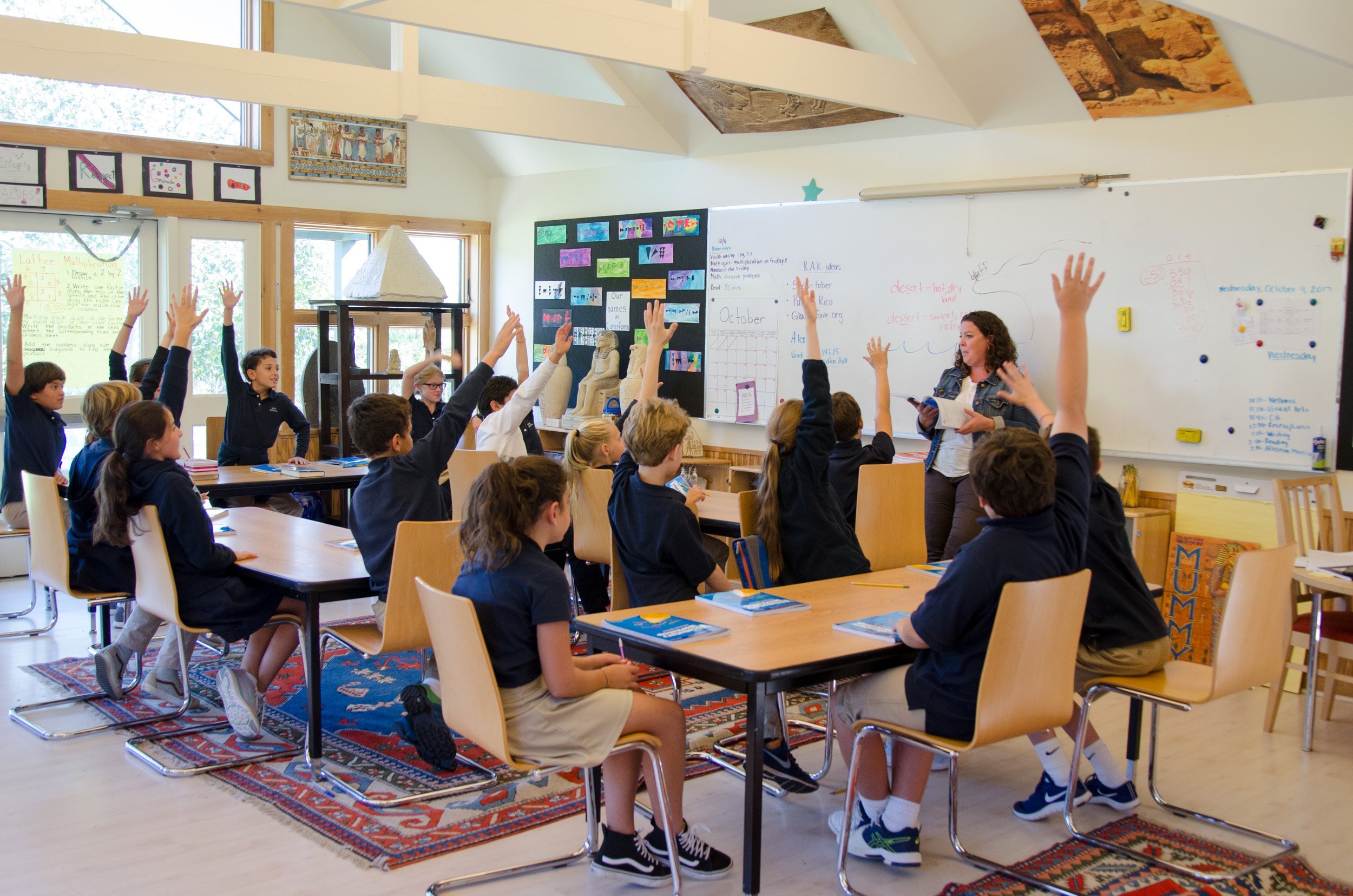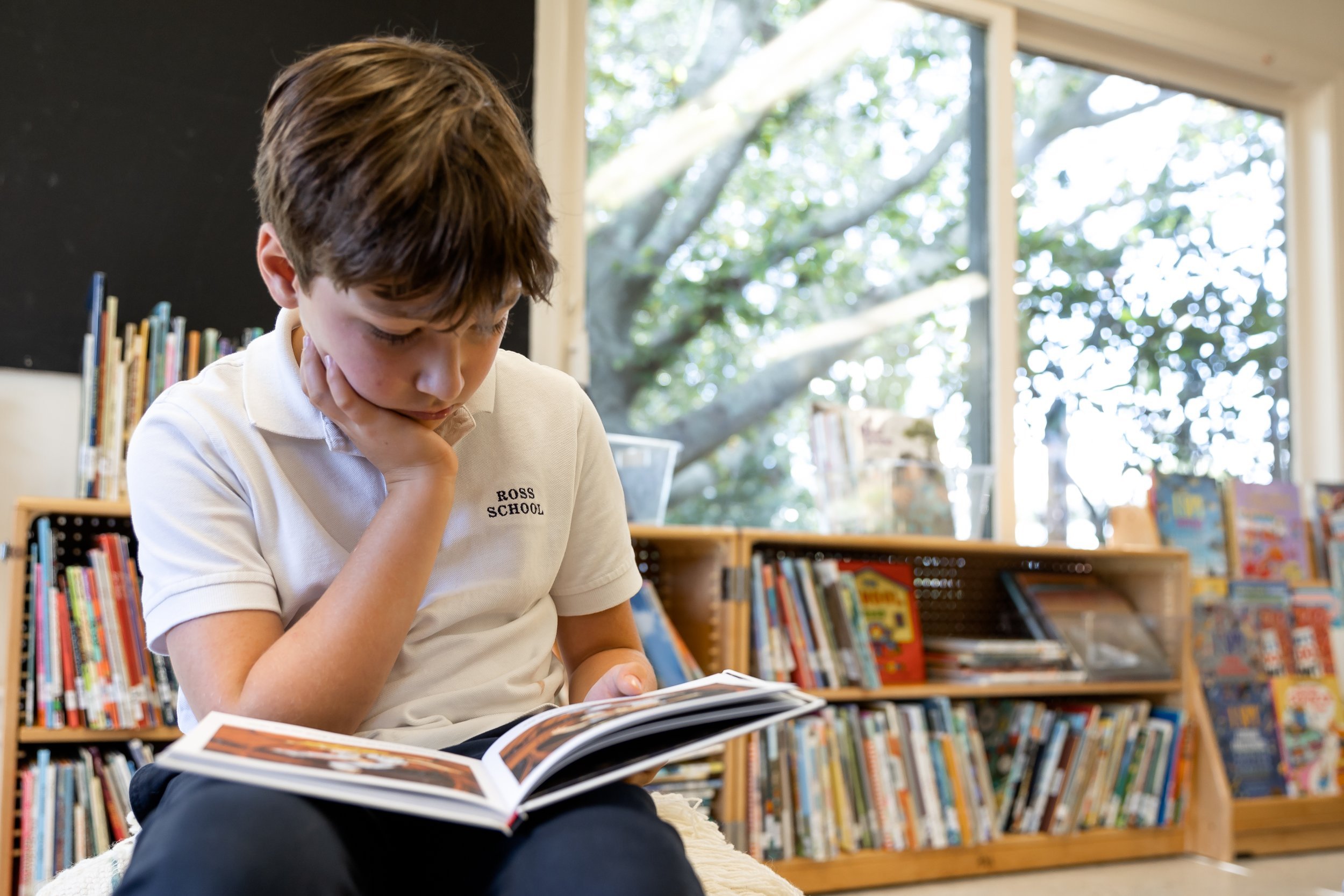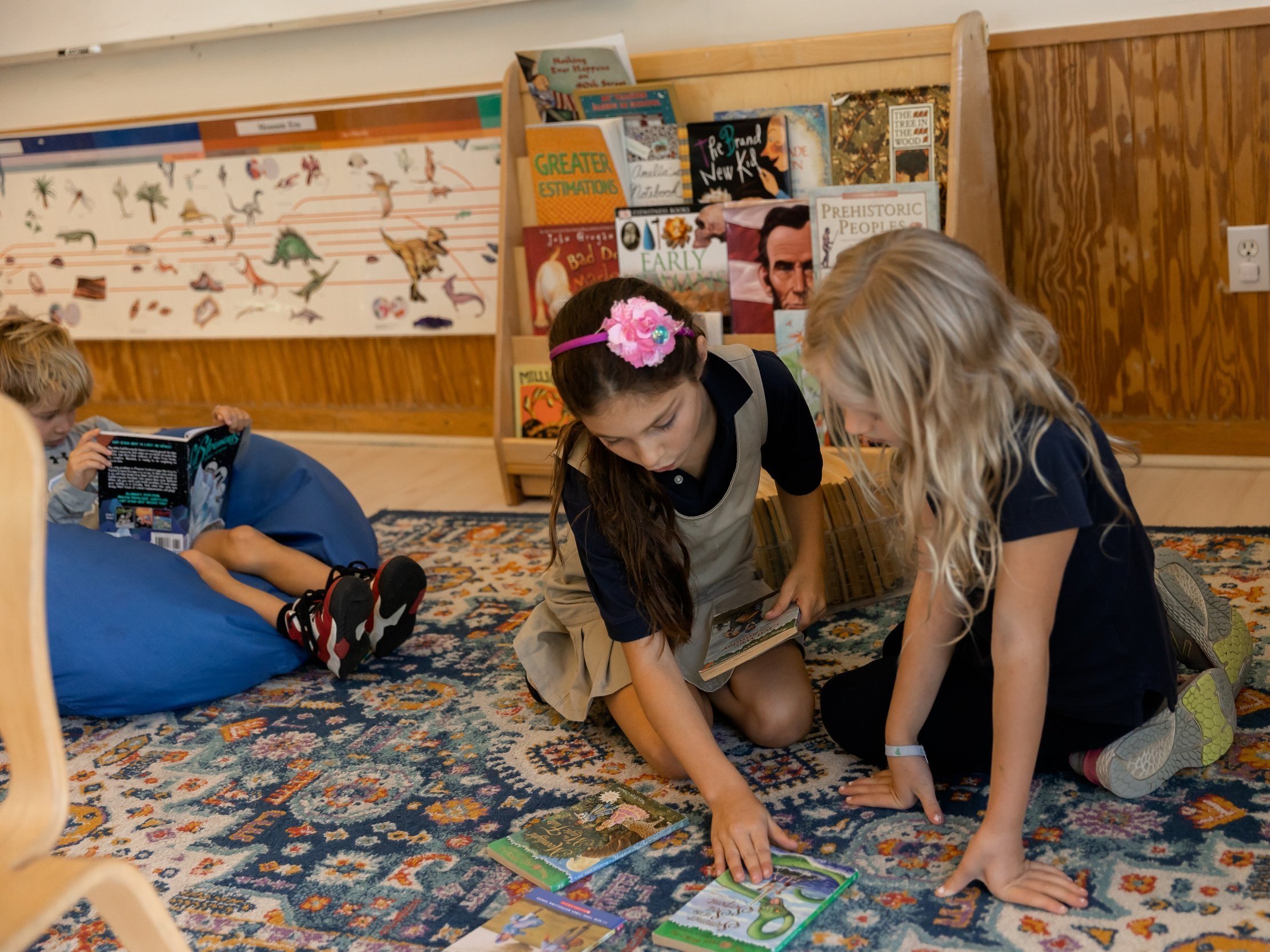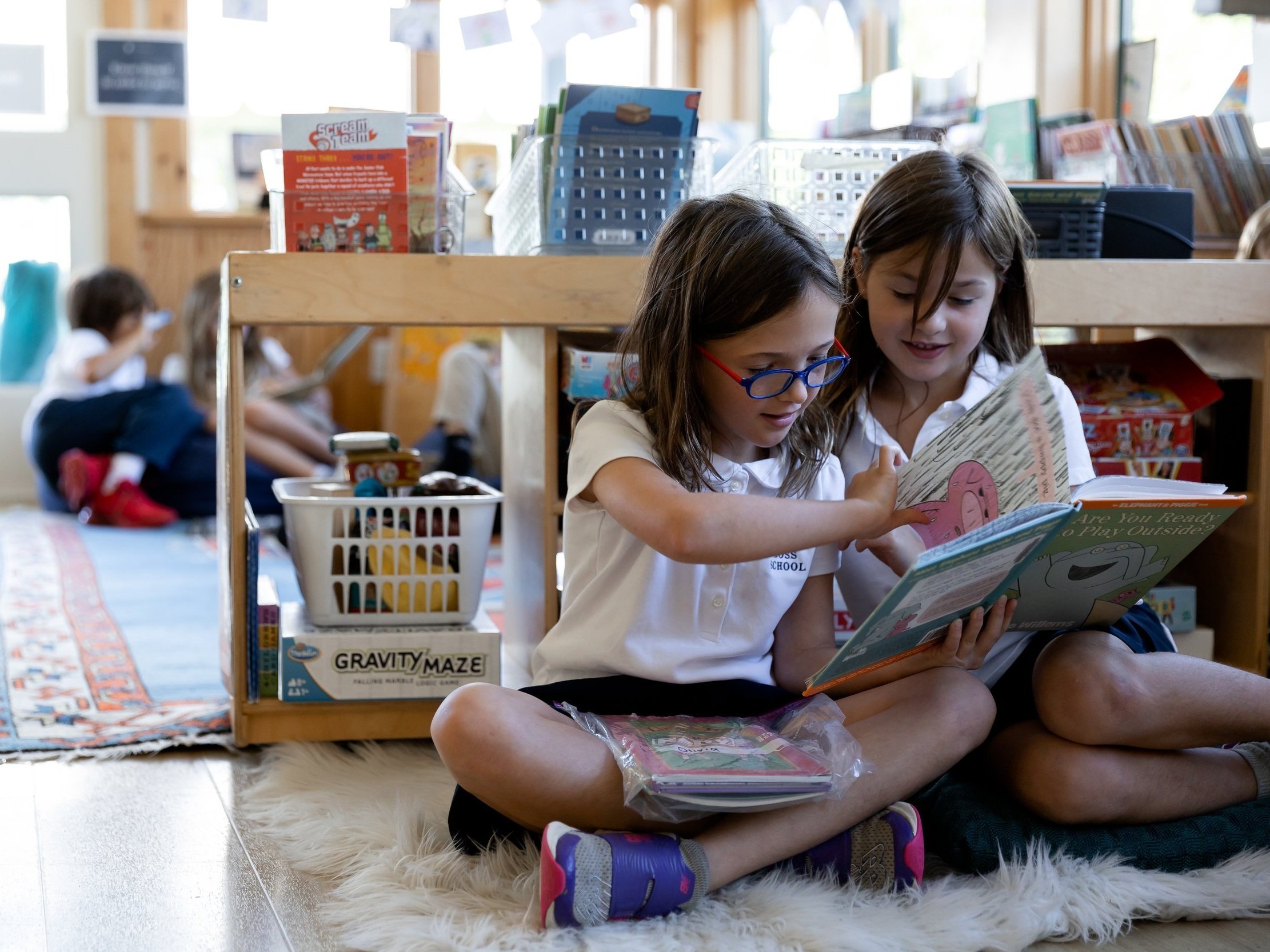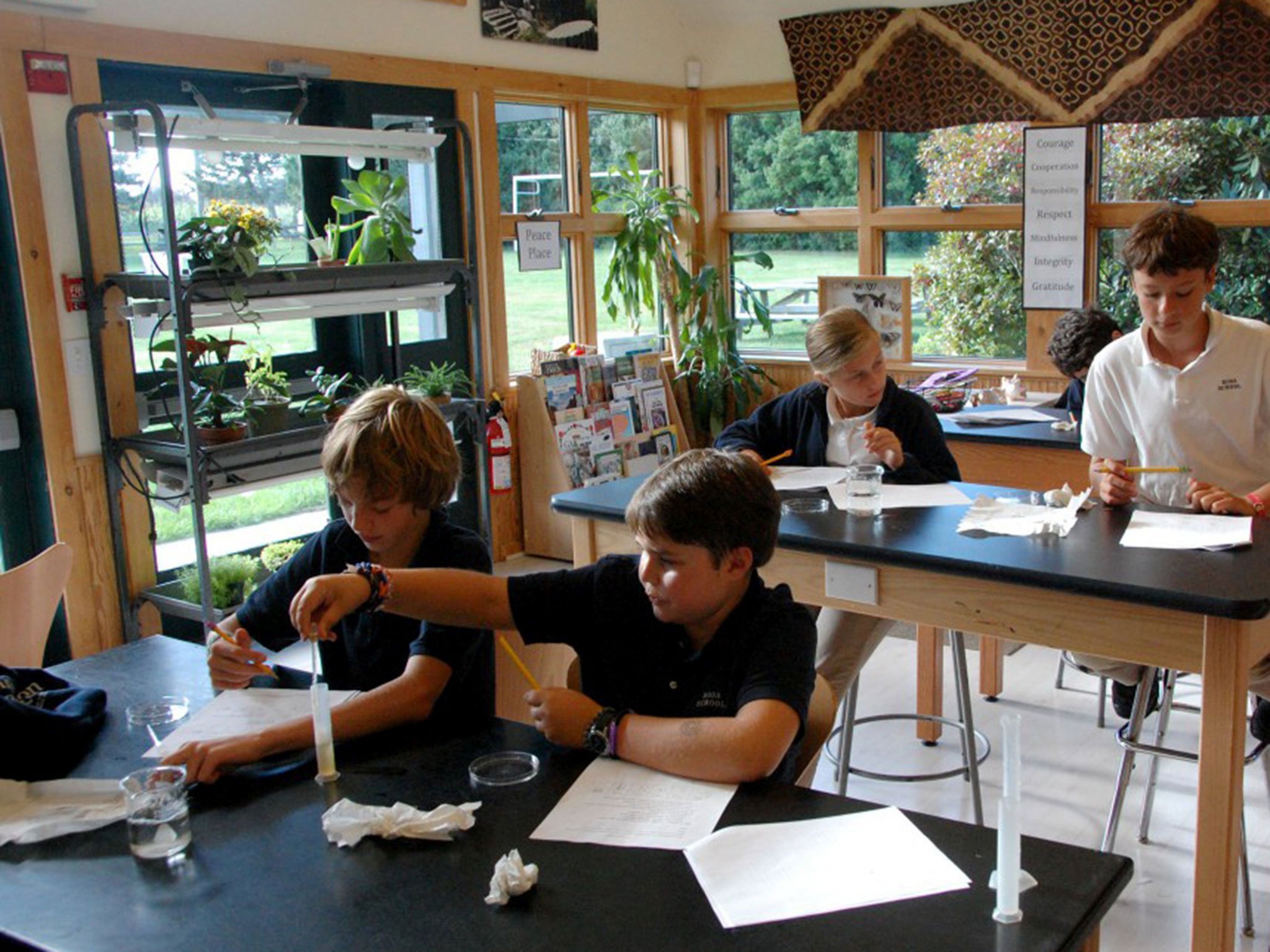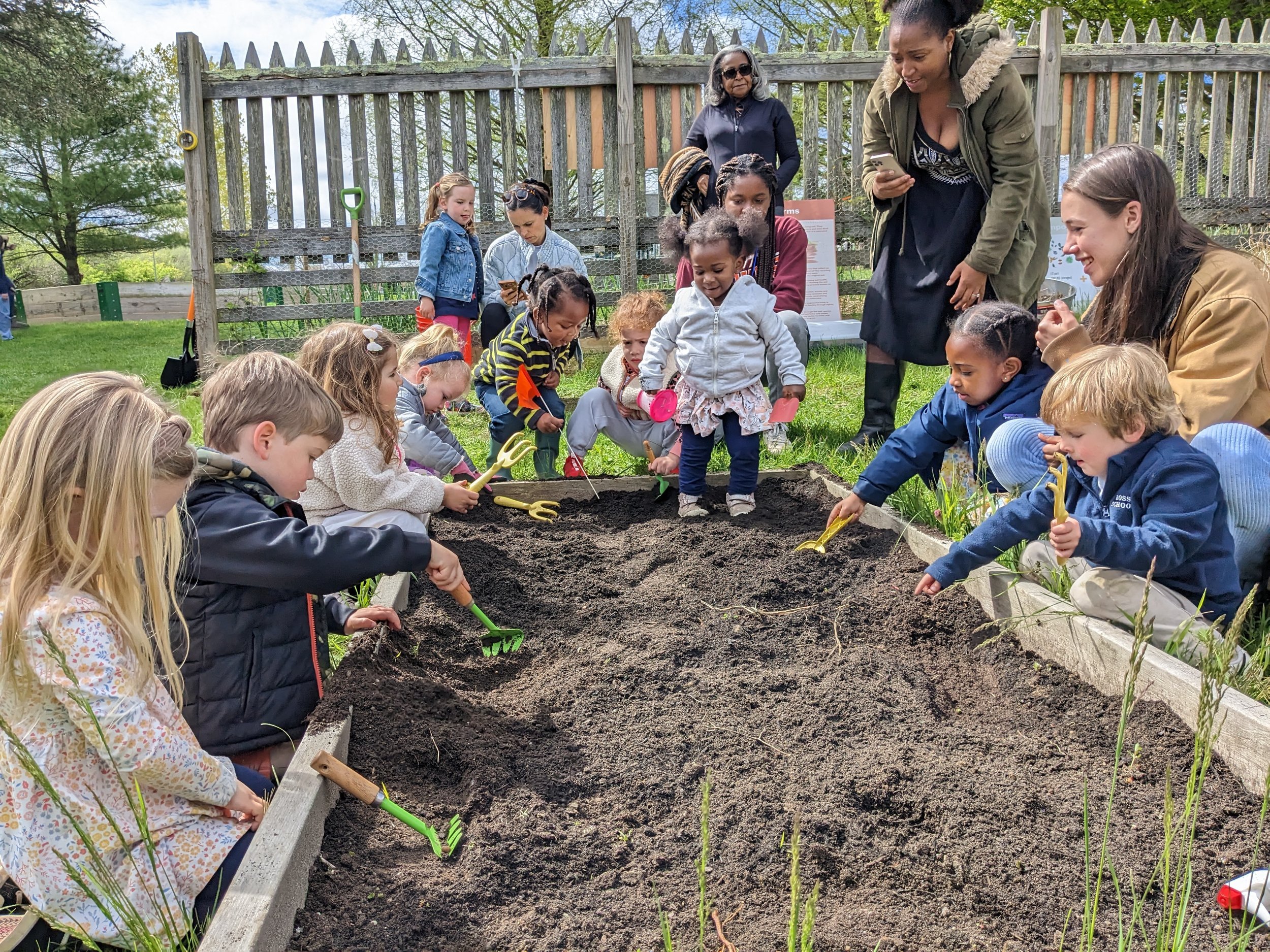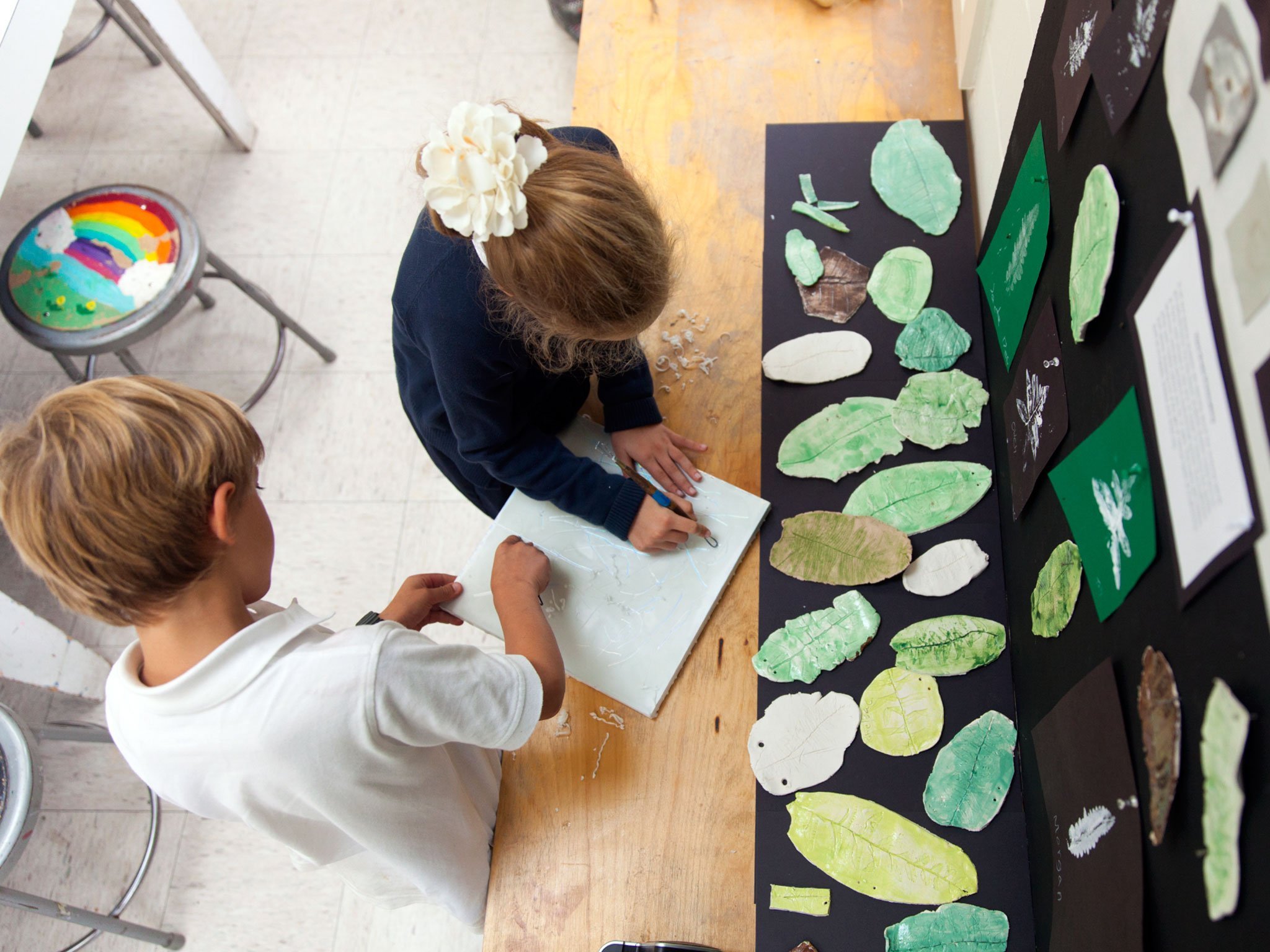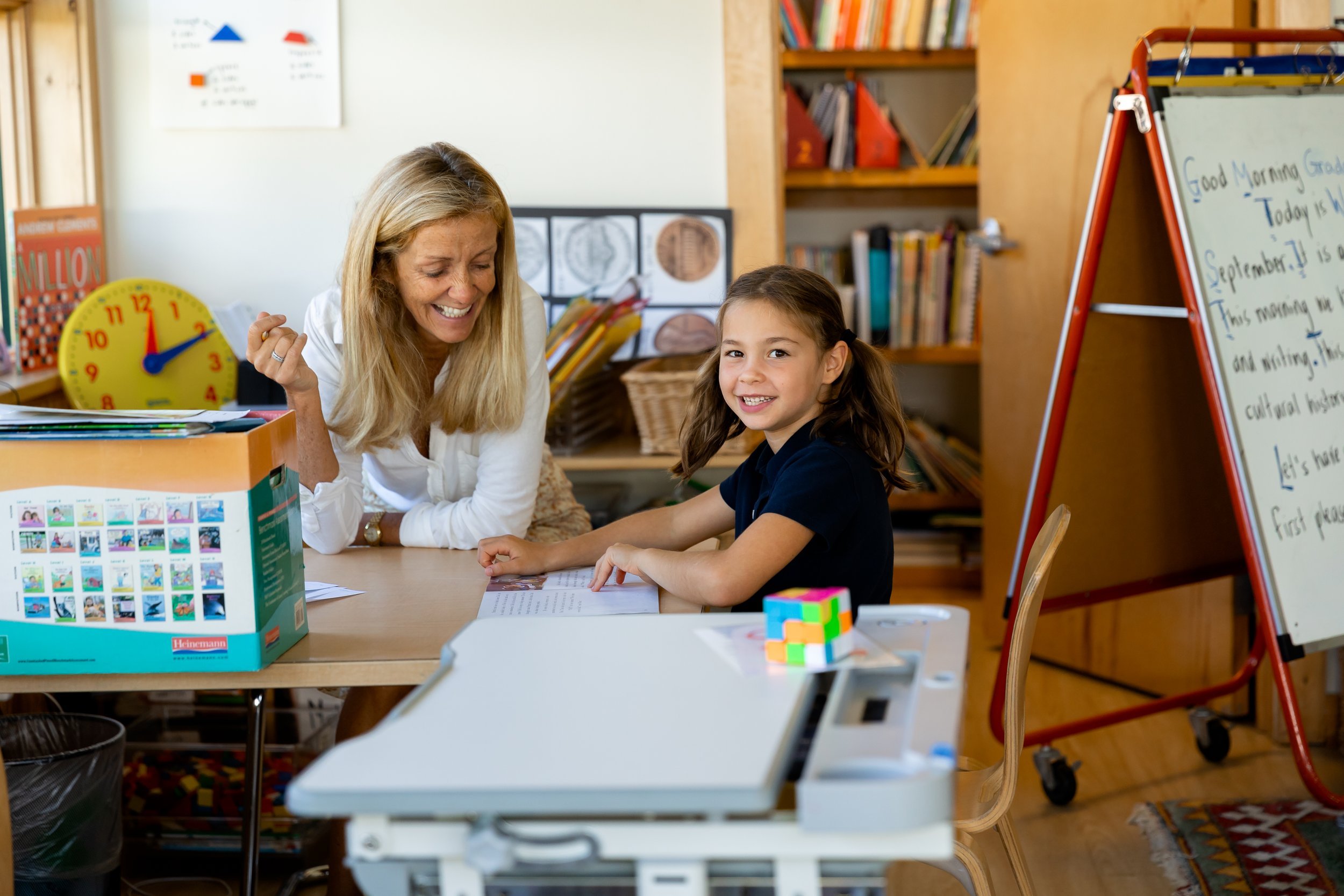
LOWER SCHOOL
Learning & Outcomes
Our instructional approach is tailored to the individual needs of our students, primarily based on the level of support required for them to meet grade-level expectations.
The Ross Lower School program introduces students to the wonder of our planet, from elemental forces and origin stories to patterns, cycles, and systems in nature and culture. Beginning in the third grade, Cultural History is taught chronologically and is the catalyst for integrating all other domains. Students in each grade study thematic developments in the evolution of consciousness by focusing on a variety of cultures.
As students progress through the grades, they revisit cultures in various periods of history, experiencing an ever-expanding Spiral upon which they continually construct new knowledge while reflecting upon previous learning. This approach is designed to foster an understanding of historical processes and the use of critical thinking skills across cultures and epochs. Such exploration and understanding is a prerequisite for thoughtful and engaged citizenship in an interconnected world.
NWEA Map Achievement
Ross School utilizes the NWEA Map Achievement test, which is administered biannually in Grades 3–5. This testing approach is particularly relevant for students who come from both public and independent schools with a history of standardized testing. Our primary objective is not to generate schoolwide or classwide data but to closely monitor the growth and progress of each individual student.
The NWEA Map Achievement test serves as a valuable tool to ensure that our instruction is finely tuned to the specific areas where each student requires either further development or enrichment. It plays a crucial role in assessing our effectiveness in fostering student growth by providing valuable insights into the impact of our teaching methods and educational strategies.
Reading & Writing
Our approach to teaching literacy is characterized by its emphasis on student-driven inquiry and the importance we place on play and exploration.
This approach recognizes the value of hands-on, experiential learning and seeks to nurture a child's innate sense of wonder and discovery. Purposefully designed learning spaces are thoughtfully curated with materials intended to inspire students' natural curiosity, focusing on elements such as color and shapes.
Our approach is informed by research, notably the work of Scarborough in 2001, which has helped shape our understanding of effective reading instruction. The Wilson Fundation program is one of the tools we use to facilitate reading development.
READING
Our reading program consists of two essential components: language comprehension and word recognition. The language comprehension component encompasses various elements, including background knowledge, facts, concepts, vocabulary, precision links, language structure, syntax, semantics, verbal literacy, genre understanding, verbal reasoning, and inference. These aspects collectively contribute to a student's ability to comprehend written text effectively.
Word recognition holds a crucial place in emergent literacy. It involves phonological awareness, decoding skills, and sight word recognition. Proficiency in word recognition is a vital component of early literacy development. Skilled reading results from the harmonious integration of both language comprehension and word recognition. To achieve this, we employ several strategies:
We assess and evaluate students' reading levels to tailor instruction appropriately.
Grouping students based on their reading levels allows for targeted support and instruction.
Over time, we aim to develop the language comprehension component strategically, enabling students to apply these skills with increasing effectiveness.
Similarly, we strive for automaticity in word recognition to enhance reading fluency.
We consider both the student's independent reading level and their instructional level to gauge the appropriate level of support and challenge. Informed by the concept of the Zone of Proximal Development (ZPD), we aim to ensure that our teachers consistently provide instruction that extends beyond what a student can accomplish independently. By offering instruction within the ZPD, we are better equipped to facilitate each student's growth and development, fostering a learning environment that is responsive to their unique needs and abilities.
WRITING
We encourage students to lead writerly lives by actively engaging their senses and making keen observations of the world around them.
Drawing on the work of Ralph Fletcher, we provide students with a writer's notebook that offers them a constant space to live as a writer, rather than limiting writing to a specific time of day or a singular activity. This practice is carried out consistently from kindergarten to the fourth grade, allowing students to embrace the identity of a writer and nurture their writing skills continuously. These notebooks serve as a vital tool that bridges our writing instruction with the reading program, connecting the two seamlessly. Our goal is to replicate the experience of reading as a writer and vice versa, fostering a deeper understanding of the written word.
The formal instruction of reading and writing commences in kindergarten, setting the foundation for students to develop essential literacy skills from an early age. This integrated approach to literacy helps students become not only proficient readers but also confident and expressive writers throughout their academic journey.
Science & Mathematics
SCIENCE
Our approach to science education is informed by the Next Generation Science Standards (NGSS), which guide our learning outcomes. We ensure that our teaching and learning experiences align with NGSS standards, enabling students to tackle complex scientific challenges and engage in inquiry-based learning effectively. This approach equips our students to compete on par with their peers in other schools and prepares them for a future where scientific literacy is increasingly important.
We have established several significant partnerships to enhance our students' learning experiences, fostering a deeper connection to their local environment.
We leverage our science program to explore the diverse ecosystems present on the East End. This exploration serves the purpose of connecting our science curriculum with the local environment, grounding our students in their surroundings. An annual field trip to Cedar Point County Park, in partnership with the Peconic Estuary, allows students to collect data on the health of the estuary, providing them with valuable insights into the local ecosystem's well-being.
Our partnership with Amber Waves involves collaborating with a farm educator to revitalize gardening efforts on Butter Lane. Students actively engage with farmers on a weekly basis. They participate in various agricultural activities, including taking care of the crops, preparing the beds for winter, harvesting crops, and learning about soil health and seasonality. This hands-on approach helps students develop a profound understanding of agriculture and the natural world.
Our commitment extends to partnering with Stony Brook's Marine Science Lab, offering students opportunities to engage in hands-on marine science research and learning experiences. Our commitment to partnering with local organizations that actively engage in environmental work is integral to helping students forge a strong connection with and commitment to their local surroundings. This aligns with our mission to make learning relevant and engaging, providing a context for understanding the world around us.
MATHEMATICS
Ross School’s Mathematics program is designed and sequenced to promote a deep understanding of mathematics. Each curricular unit provides an in-depth study of a specific and related set of mathematical concepts and skills, in one (or sometimes two) mathematical strands. Each successive unit builds on the previous, both within and across strands, and across grades. This can be seen by looking at content-specific information, including the Main Math Ideas and relevant Benchmarks, from across the grades:
Counting and the System
Addition and Subtraction
Multiplication and Division
Rational Numbers
Geometry
Measurement
Data
Analyzing Patterns and Rules
Art
The significance of art in our educational environment cannot be overstated. Within our campus, the art studio stands as a prominent and essential space.
In the studio, students engage in the exploration of both local contemporary artists and historically significant artistic figures. This not only exposes them to the world of art but also connects them with the rich artistic heritage of our local community, which has a vibrant history as an artists' colony.
Students are encouraged to express creatively the questions and concepts they explore in their curricular studies. For instance, our math program revolves around visual representations of mathematical concepts and thinking. We teach multiplication by grouping things together and challenge students to visually demonstrate their comprehension. This approach transforms abstract mathematical concepts into tangible, material expressions, promoting a deeper understanding of complex ideas. Art, in its various forms, plays a vital role in fostering creativity and enhancing the educational experience for our students.
Art serves as a conduit, allowing students to connect with cultures of the past, aligning with a key feature of our Spiral Curriculum. Clay explorations are a pivotal component, as this medium empowers students to develop both fine and gross motor skills while forging a tangible link to history. The presence of a kiln provides a foundational medium for their creative pursuits, seamlessly integrated into their artistic journey.

